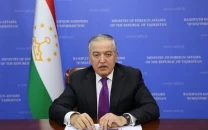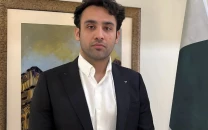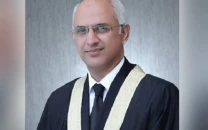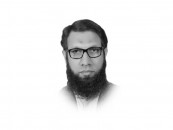The faith of the Islamic State
Black banner with Islamic creed written on it echoes most basic claims of Islam as a system of belief and world order.

Dr Christoph Günther is currently serving as a research associate at the Research Training Group, Religious Non-conformism and Cultural Dynamics, at the University of Leipzig, Germany. As of now, his research areas include religion and the public sphere, sociology of religion, civil society and social movements, as well as modern reform movements and political ideas in the Middle East.
He has been a student of Middle Eastern Studies, History, and Arabic Language at the University of Bamberg and Cairo University. Between 2010 and 2013, he received a three-year scholarship in Leipzig and wrote his PhD thesis titled, ‘The genesis and ideology of the Islamic State of Iraq’ which has been published in book form in June 2014 by Ergon publishers.
Dr Guenther, let us start with a personal question: how did you become an expert on religious conflicts in the Middle East?
I would not refer to myself as an expert on religious conflicts in the first place. My interests center on religious, political, economic and social developments in this particular region of the world. As a scholar who began his academic career post 9/11, I find that religious conflicts play a significant role in the way my discipline is framed in the public sphere because questions revolving around them frequently arise. This tendency, of course, also shapes the discipline itself to a significant extent. As far as my dissertation and master’s thesis are concerned, what drew my attention to the ‘Islamic State of Iraq’ were the questions around its theological and political legitimisation, as well as the practical implications on the ground of this state-building project.
You just published a very detailed book on IS, but it is so far available only in German. Can you give us a short overview of its content and central thesis?
I was asking myself how the Islamic State of Iraq legitimised its own establishment, and which measures did it employed beyond violence to achieve its goals.
I conclude that, in order to draw a comprehensive picture of the group’s engagement in Iraq since 2003, it is necessary to see the group in the context of historical developments under Saddam Husayn’s rule (specifically, the revitalisation of religious and tribal identities that he used as a means to stabilise his reign) as well as of changes in Iraq’s political and social fabric since 2003. In doing so, I proposed to widen the scope of scholarly attention beyond violence and terrorism. My focus was on understanding IS as a social movement that strives for acceptance as a state-like actor and uses the cultural memory of their audiences for its own purposes.
Your thesis is that the IS movement actually does a very good job of re-connecting its symbols and semantics to the religious tradition. Why do you think that is the case, and could you name one or two significant examples?
The group seems to thoroughly understand which audiences it wants to communicate to, and uses particular symbols and semantics that resonate well with the frameworks of experience and the cultural as well as personal memory of these audiences. The group wants to engage in a meaningful discourse, as Stuart Hall has put it, and therefore needs to employ symbols and semantics that can be both understood by its audiences and affect them in a way that suits its own purposes.
The most significant example to me is the black banner with the Islamic creed written on it. In all its simplicity, it echoes the most basic claims of Islam as a system of belief and world order. Furthermore, it underpins IS’s claims to represent the Prophet Muhammad (PBUH)’s spiritual and physical heritage. It thereby serves as a symbolic transfer of the Prophet’s (PBUH) authority as a religious and political leader of the first Islamic State in Medina. By and large, this visual sign, notwithstanding — or precisely, because of — its simple graphical structure, is heavily charged with meaning and compels notions of prophetic succession, rebellion, unification as well as of revenge and annulment of dishonouring actions which have remained in the collective memory of Muslims. By connecting with the basic religious knowledge and cultural memory of its recipients, IS provides subconscious stimulation and affection. In doing so, it acts to provide grounds for the attribution of legitimacy, in thought and action, to the existence of an ‘Islamic State’ in Iraq and beyond.
Do you think the distinction between East and West is fruitful or helpful for analysis, considering the globalised world we live in?
Generally speaking, these cultural-geographical distinctions have never been fruitful if used as epistemological instruments, as they imply a homogeneity that in most cases does not meet reality.
You have showed that this religious non-conformism is not so much used against the so-called West, but against the enemy within — in the case of IS, mainly against Shias. So is this only on the surface a conflict between East and West?
Indeed, it is a conflict that has more than one level, if you wish. Generally speaking, it is a conflict between people referring to themselves as a vanguard who feel obliged to enforce God’s commandments and the Sunnah of the Prophet (PBUH), and those who stand against their ideas, norms, and beliefs.
(This interview was conducted by students of Communication and Media Studies, Habib University).
Published in The Express Tribune, December 28th, 2014.
Like Life & Style on Facebook, follow @ETLifeandStyle on Twitter for the latest in fashion, gossip and entertainment.



















COMMENTS
Comments are moderated and generally will be posted if they are on-topic and not abusive.
For more information, please see our Comments FAQ